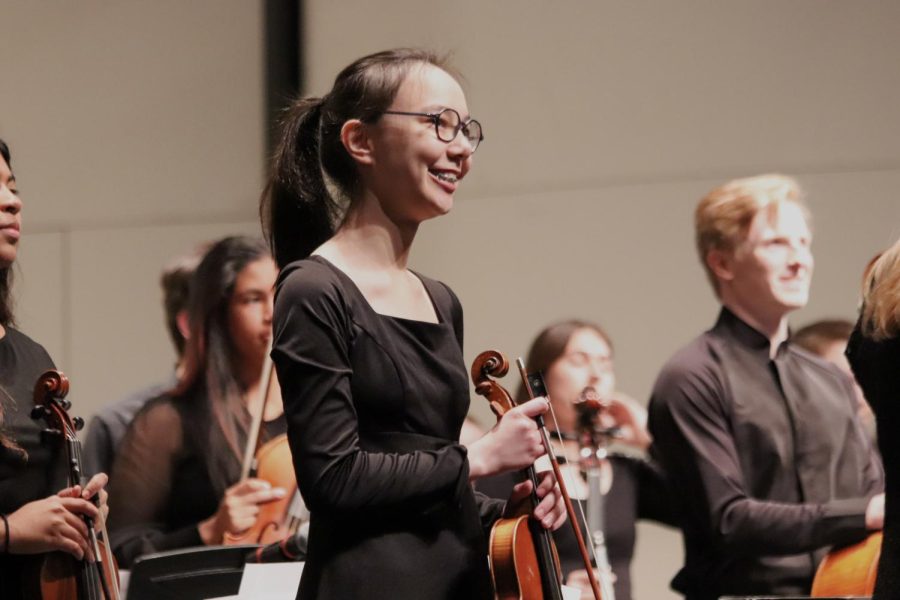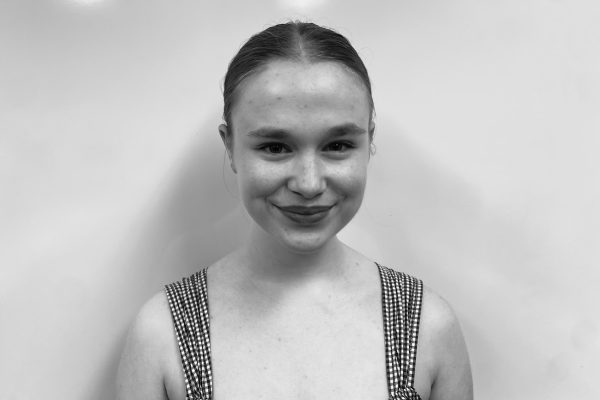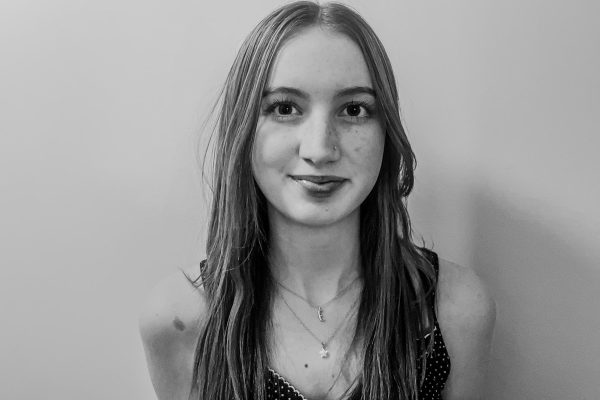City Symphony Orchestra Premieres New Piece at Final Concert of the Year
May 28, 2023
On Tuesday, May 23, Opstad Auditorium was the site of the world premiere of a brand new orchestral work. “Memoirs”, a two movement piece for five solo cellos and string orchestra, was written for the five senior cellists in Symphony Orchestra: Adrian Bostian, Ryan Brentner, Isaac Bullwinkle, Greta Stanier, and Adam Zeithamel.
“The original intent and motive [behind writing the piece] was Mrs. Stucky (City’s orchestra director) wanted to highlight her ensemble along with some of the senior cellos, and to kind of honor all that really great work that they’ve done over the years,” said the composer of the piece, Joshua Reznicow. “So the inspiration initially came from that and finding like ‘how do we develop the piece’ because there [are] not a lot of pieces out there with this type of ensemble.”
Reznicow has a wide variety of musical influences, many of which can be heard throughout “Memoirs”.
“For composition, I have a lot of influences. The ones that come to the surface are Stravinsky, Bartok, Tchaikovsky, and [I’m] a huge Beethoven fan,” Reznicow said. “Then [I’m] heavily influenced by the rock that I listened to growing up at your age. My wife and I are big Dave Matthews fans. [Also a big fan of] Metallica, the Chili Peppers, Pearl Jam, Nirvana. All that influences writers whether it’s direct or not.”
Reznicow has been an orchestra director for the past 20 years and currently works at Linn-Mar High School. It was working with high school students for the past 20 years that helped Reznicow to develop the piece’s story.
“I’ve had the fortunate opportunity to work with folks of your age for the last 20 years. Going through school, through life so far, has its ups and downs. It has different moments where it’s happy and it’s dark or it’s sad or it’s tough or it’s pensive. The first movement is really quite gorgeous, but it’s got this sort of intention with that. And then the second movement [has] got a lot of that but [it’s] very aggressive and then it finally is free at the end,” said Reznicow. “This piece reflects [those emotions]. I wanted [the] emotions [in] the piece to reflect the [emotions of the] people that are actually playing it.”


































